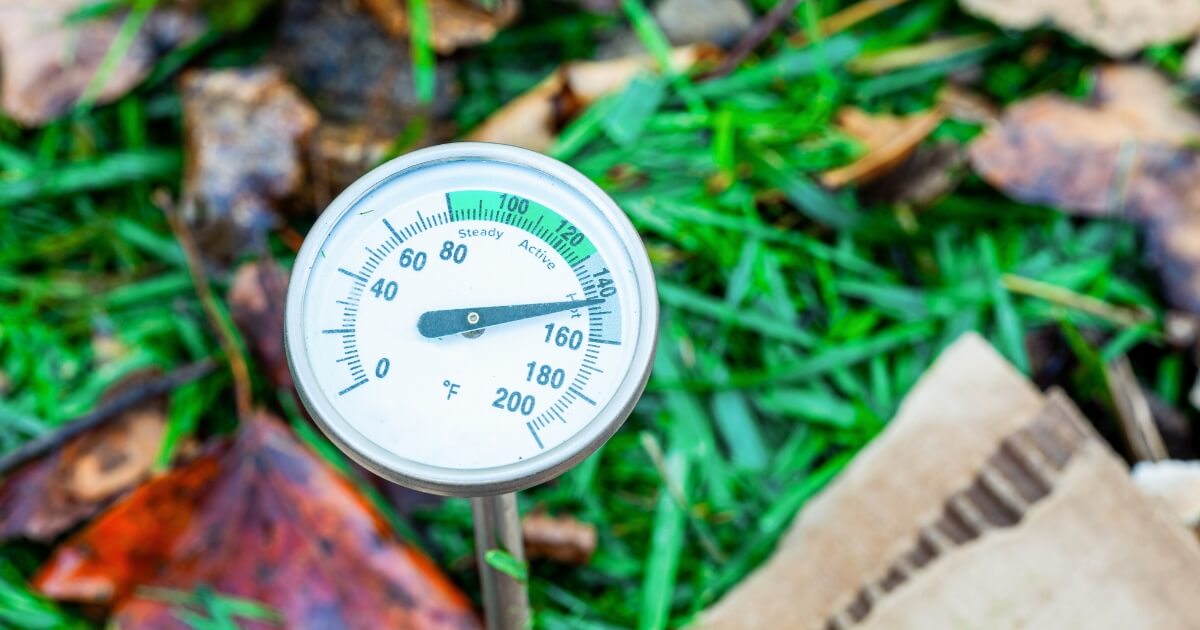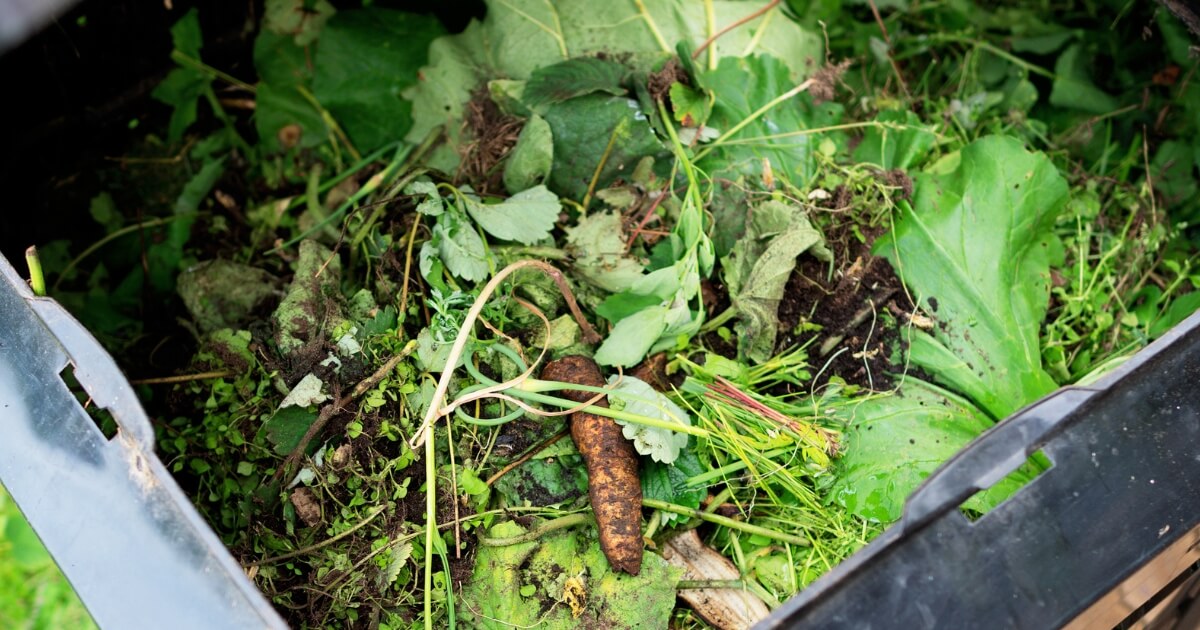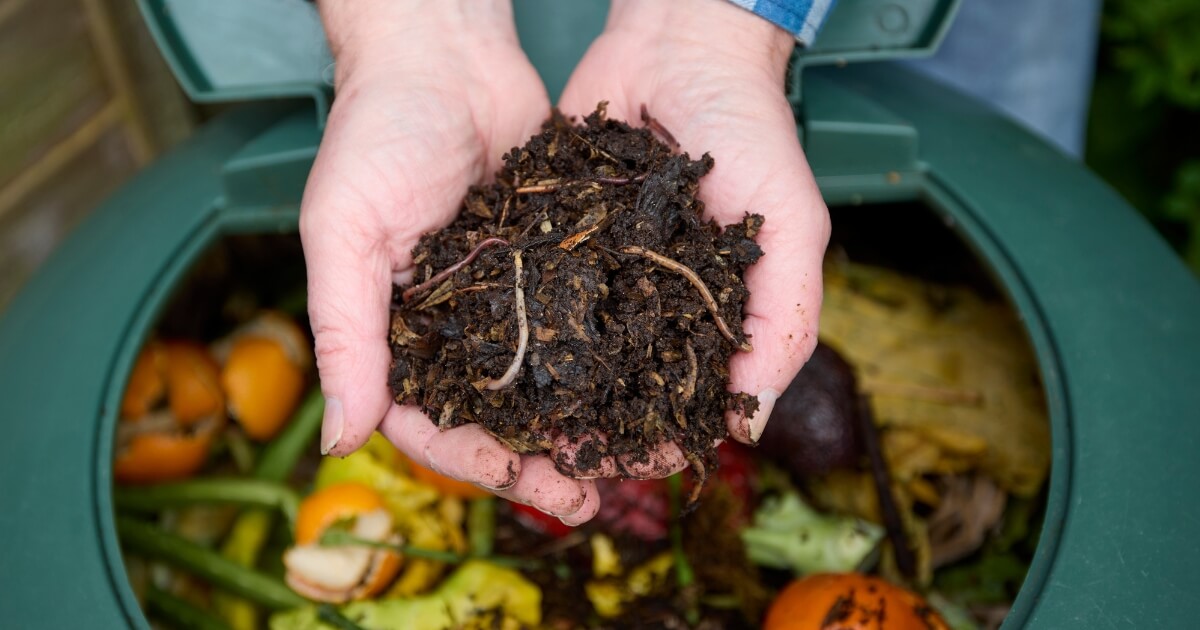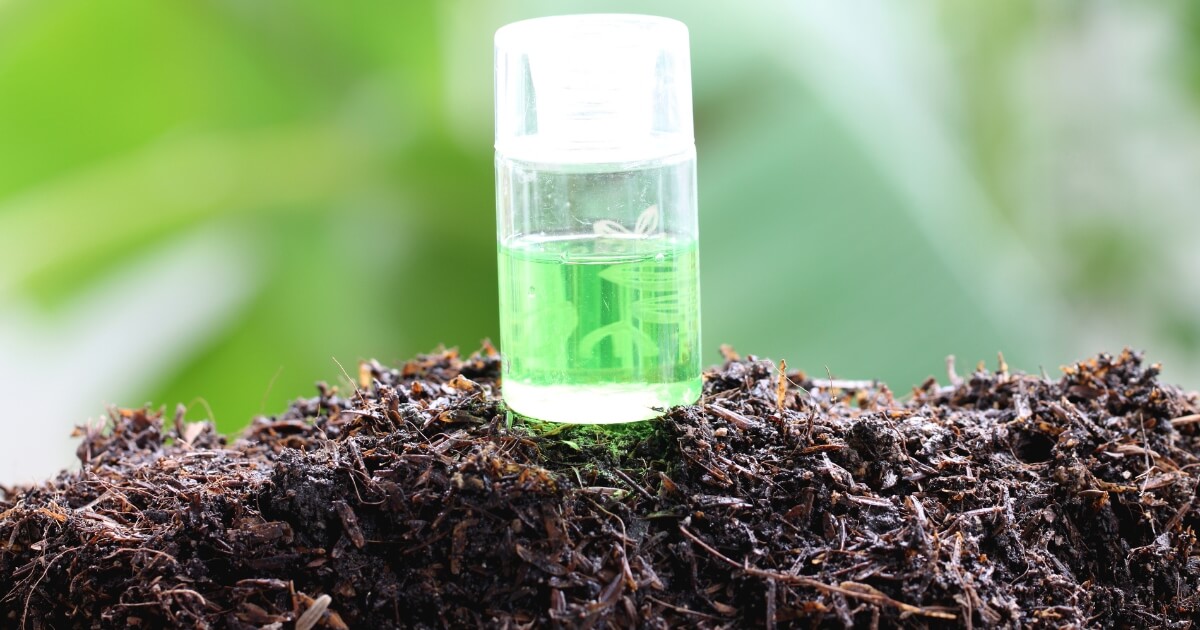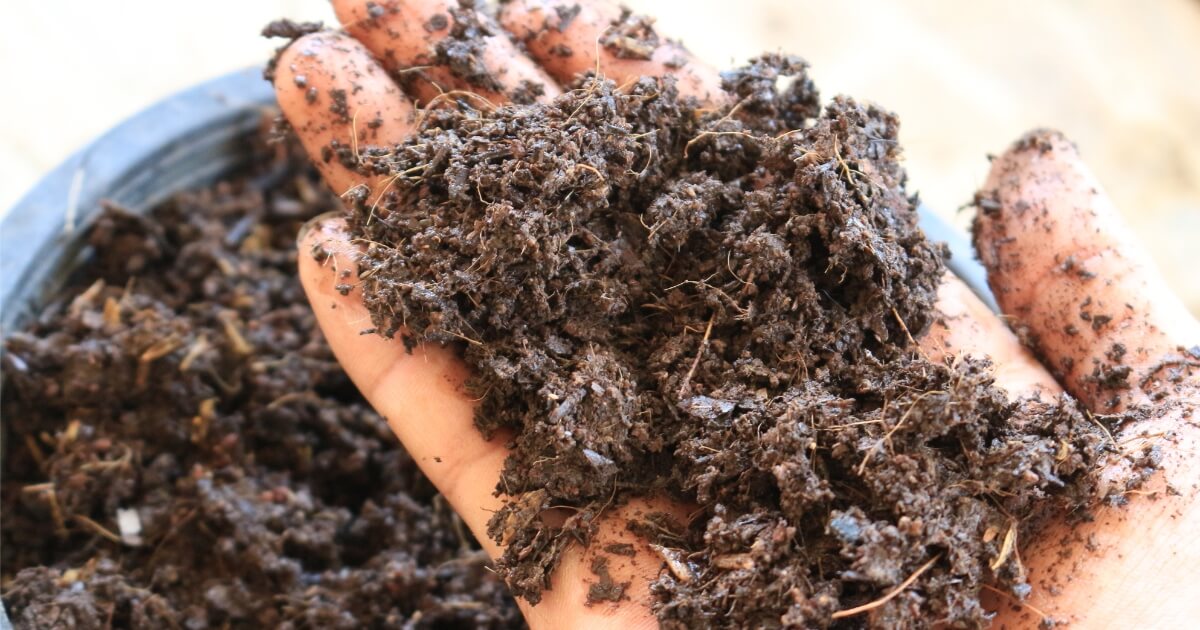Composting is a great way to break down food scraps so that you help reduce household waste, protect the environment and deliver vital nutrients to your garden for free.
But compost relies on heat to decompose properly. Can you really get rich compost when it’s cold out?
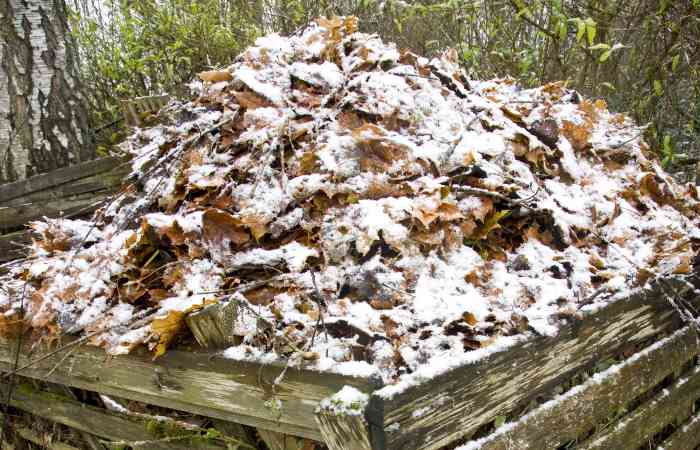
You can compost throughout the winter even if your garden is taking a break for the season.
Here are some winter composting tips so that you can make the most of your kitchen waste and prepare for a thriving garden once the weather finally warms up.
Advantages Of Winter Composting
If you’re an avid gardener, you may get disheartened when you have to put your passion aside in the winter. Even if it’s too cold for plants to grow in the garden, you can compost.
Some of the benefits of winter composting are as follows:
- You can continue to work on your hobby.
- You minimize the waste that goes to the landfill.
- You maintain a routine.
- There is little chance of overheating your compost pile.
- You don’t have to do much maintenance.
- Starting compost in winter creates a pile that’s primed to heat up as the weather rises.
- You can do something productive with all of your yard waste from the fall.
Throughout most of the year, you don’t need to overload your compost bin with brown material, such as dry leaves. However, your compost craves this in the winter. You’ll keep your yard cleaner if you continue to compost throughout the cold season.
Disadvantages Of Winter Composting
If you’re dead set on composting throughout the winter, you should know what you’re up against. Namely, compost piles can go dormant in the cold weather. You can also insulate your bin to make sure that it stays warm enough to break down plant material.
But getting outside in the bitter cold may not be your idea of fun. One of the downsides of winter composting is that you’ll have to spend some time outdoors monitoring it.
When spring comes and the days heat up, moisture can build up in your compost bin. The same thing can occur if you have wet winters or deal with lots of thawing snow and ice. This can create a slimy, stinky mess.
Extreme cold can cause your compost to freeze. Decomposition will come to a stop, but it will reactivate during the freeze-thaw cycles. You should just make sure that the frozen pile doesn’t damage plastic compost bins or tumblers as it expands.
What Food Can Be Composted In Cold Weather?
You can compost the same food in cold weather as you do in warmer weather. However, chop it up into smaller scraps that you normally do.
Some examples of food waste that you can compost include:
- Stems from herbs and greens
- Fruit and vegetable peels and cores
- Tea bags
- Coffee grounds
- Eggshells
- Nut shells like peanut and pistachio
Compostable food waste is referred to as a green ingredient. These materials are rich in nitrogen, relatively moist and break down easily.
But they need to be blended with a good balance of carbon-rich brown ingredients to actively decompose during the winter. Too much of either material can interfere with the composting process.
A general guideline for the best compost ratio is to use four times as much brown material as green ingredients. You might have to add even more carbon in the winter. The University of Missouri offers a guide to help you identify how much nitrogen and carbon are in common composting ingredients.
Keep yard materials, like straw and dried leaves, in a dry bag so that you can add them to your compost pile all season. You can also balance your compost bin with sawdust, cardboard scraps or shredded newspaper.
You can add flower deadheads and houseplant trimmings to your compost. Avoid adding woody materials, like pine boughs, though. These won’t decompose easily.
What Do You Do With Your Compost In The Winter?
Now that you know what goes in your compost, you might wonder what to do with your pile. Where should you put it, and how should you maintain it?

If you’re composting outside, make sure that you start early enough to create a decently sized pile. It will retain heat better if it’s 3 to 4 feet tall and wide. You don’t have to worry about this if you use a tumble composter.
To keep the compost active, try moving the pile to a sunny area of the yard. Consider insulating it.
You might also want to shovel a designated path to your compost bin in the winter. If you don’t have easy access to it, you’re less likely to toss your waste in it.
Some experts recommend monitoring the temperature of your compost pile throughout the winter. Even though the outer surface of your pile is susceptible to getting cold, the inside of a larger pile should still be active enough to support the microbes that enable decomposition.
But winter notoriously slows down compost activity. You don’t need to worry about it too much as long as you add a good balance of scraps and follow the other winter composting tips in this article.
Should I Cover My Compost Pile In The Winter?
A hotter compost pile will create a dark, rich soil than a cold one. You can cover your pile with a tarp, but the University of Illinois Extension claims that it’s not necessary. Still, you might want to cover the compost if high winds are drying out your pile or heavy rain is making it soggy.
If you do cover your compost in the winter, don’t compress it. The pile should be fluffy to encourage air circulation. A plastic tarp can also trap moisture underneath, leading to a moldy compost mess.
Consider using a lid that’s made of burlap, wood or metal to cover your compost so that it promotes air flow. Use it only on days with heavy precipitation, and remove it during sunny weather.
Most people agree that your compost is going to break down eventually. Maintaining ideal moisture and heat levels can help it produce finished compost more quickly. But plenty of people switch from hot composting to low-maintenance methods in the winter just to make things easier on themselves.
Does Winter Composting Attract Pests?
Warm areas, like sheds, garages and compost bins, could be inviting to small critters that seek out warmth in the winter. A frozen compost bin shouldn’t emit strong odors that typically attract pests, but you might not have freezing temperatures in your area.
Take some precautions to reduce the likelihood that animals will take up residence in your compost for the season. Avoid adding grease, oils or animal materials to your compost bin. Those will attract pests in any temperature.
Make sure that you’re adding plenty of brown material to your food scraps. Some people turn to indoor composting, such as vermicomposting or Bokashi composting, to manage food waste during the winter and avoid attracting pests to their outdoor bin.
But if your compost is outside, you can make it less cozy for pests by turning it. That will disturb critters. Planting thorny bushes, like holly, next to your compost bin may also thwart animals from using it for shelter.
Can Compost Worms Survive Winter?
One of the reasons that compost thrives in warm weather and slows down in the winter is that it relies on bugs and worms to aerate it. Earthworms die in freezing temperatures if they don’t burrow deeply enough into the soil.
Red wigglers, the most common type of worm that you find in your garden, live in the upper layers of soil. They don’t usually make it through the winter. Night crawlers, on the other hand, tunnel below the frost line, where they ride out the winter in small cavities and emerge when the weather gets warmer.
Compost that’s warm enough can keep worms alive. Monitoring your compost’s temperature can keep red wigglers alive and happy. Even if they die, though, the worms’ eggs make it through the frosty weather.
Earthworms lay their eggs in cocoons that survive freezing temperatures. When the conditions improve, those eggs hatch, permeating your compost pile with beneficial creatures once again.
How Do You Keep Compost From Freezing?
You can keep worms alive and maintain the activity of your compost bin by insulating it. This should prevent it from freezing. You can provide insulation from within by layering with adequate amounts of brown material.
Some people use wood planks to cover the bin. This should help the pile retain some heat without trapping moisture.
The ground can be a good insulator. Try digging to a depth of 2 feet and starting your pile in the earth or surrounding it with hay bales. Don’t worry too much if you have a white winter.
Snow also insulates your compost. Just make sure that you remove heavy accumulations from the top of your pile to prevent problems when it thaws.
The wetter your compost is, the more apt it is to turn into a solid chunk of ice.
Still, you should keep your compost somewhat damp to promote microbial activity, which will help it stay warm.
Do Compost Tumblers Work In Winter?
Because compost tumblers are exposed to cold temperatures on all sides, they’re likely to freeze if the temperatures drop for a significant amount of time. Plus, tumblers usually have a smaller capacity than a large pile. This means that they’re less insulated from the cold.
You can still use a compost tumbler in the winter, however. Just make sure that you’re careful about balancing out brown and green material, and make sure that you turn it regularly.
Because most compost tumblers are aerated, they allow wetness in. Check the moisture levels regularly, and add more brown material if the compost is too damp. Keep adding ingredients throughout the winter to help the bacteria stay active.
Some people move their compost tumblers into a shed or garage during the winter to protect them. However, doing this could cause odor or pest issues. You might try placing a plastic tarp over a tumbler outside instead of bringing it indoors.
Should I Turn My Compost In The Winter?
Although there are so many articles about optimizing your compost, you don’t have to keep a high-maintenance bin or pile. Doing nothing should still produce compost; it will just happen more slowly.
You don’t have to turn your compost in the winter. Doing so may allow heat to escape, lowering the temperature at the core and making the pile more susceptible to freezing. If you’re using a tumbler, however, you should rotate it.
If it’s not too cold, try rotating your compost pile every so often. It will release heat, but the incorporation of air will help the temperature rise when the pile settles again.
How do you know when to turn the compost? Use a thermometer. If the core of the compost is above 100 degrees, it’s active enough and should retain its heat for a while. Once the temperature flat lines, you can turn it, redistributing the layers.
If the pile does freeze, don’t try to turn it. You won’t be able to move the scraps anyway.
In Summary
Microbial activity slows down when you compost in the winter whether you use a cold or hot composting method.
Still, composting in cold weather is worth it for reducing the amount of garbage that you send to the landfill and creating gorgeous black soil that infuses your garden with nutrients in the spring.
